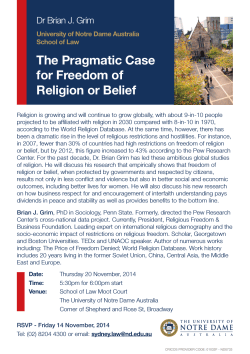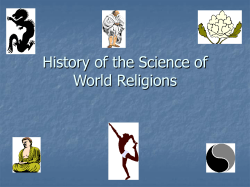
270 Chapter Logical Agents 7.
270
Chapter 7.
Logical Agents
function 1-1YnniD - WumPus - AGENT(percepr) returns an action
inputs: percept, a list, [stench,breeze,glitter,bump,scream]
persistent: KB, a knowledge base, initially the atemporal "wumpus physics"
t, a counter, initially 0, indicating time
plan, an action sequence, initially empty
TELL(KB, MAKE-PERCEPT-SENTENCE( percept , t))
TELL the KB the temporal "physics" sentences for time t
safe (— {[x, y] : ASK ( KB, OK u) = true}
if ASK(KB, Glitter') = true then
plan [Grab] +PLAN-ROUTE( current, {IL II}, safe) + [ Climb]
if plan is empty then
unvisited
{[x, y] : ASK(KB,
= false for all t' < t}
plan PLAN - ROUTE(clirrent, unvisited fl safe, safe)
.
if plan is empty and ASK(KB, HaveArrow ') = true then
possible_wunipus
,
ASK(KB,
W„,) = false}
plan i— PLAN-SHOT(current, possible _wumpus, safe)
if plan is empty then 1,1 no choice but to take a risk
net_unsafe
: ASK(KB,
OK 4
= false}
plan i— PLAN - ROUTE(current, unvisited11 not _imsafe, safe)
if plan is empty then
plan PLAN - RouTE(current,{j, 1]}, safe) + [Climb]
action POP(pfan)
TELL(KB, MAKE-ACTION -SENTENCE(uc ULM, I))
t
+ I
return action
function PLAN - ROUTE( current,goals ,allowed) returns an action sequence
inputs: current, the agent's current position
goals, a set of squares; try to plan a route to one of them
allowed, a set of squares that can form part of the mute
problem
ROUTE-PROBLEM( current, goals ,allowed )
return A*-GRAPH-SEARCII(probiem)
Figure 7.211 A hybrid agent program for the wumpus world. It uses a propositional knowledge base to infer the state of the world. and a combination of problem-solving search and
domain-specific code to decide what actions to take.
by a unique binary number, we would need numbers with 1og 2 (2 2 ' ) = 2" bits to label the
current belief state. That is, exact state estimation may require logical formulas whose size is
exponential in the number of symbols.
One very common and natural scheme for approximate state estimation is to represent
belief states as conjunctions of literals, that is, 1 - CNF formulas. To do this, the agent program
simply tries to prove X t and 'Xt for each symbol X t (as well as each atemporal symbol
whose truth value is not yet known), given the belief state at t — 1. The conjunction of
Section 7.7.
Agents Based on Propositional Logic
271
0
0
0 0
0 0 0 0 0 0 0 0
0 0 CD 0 0 0 0 0 0
--
I
:
.
-
7
r -------------
1
1
I
........................................... o
I...........................................
0 0 0 0 0 0 0 0 0
0 0 0 0 0 0 0 0
0000 ; 0000 0
Figure 7.21 Depiction of a 1-CNF belief state (bold outline) as a situp y representable.
conservative approximation to the exact (wiggly) belief state (shaded region with dashed
outline). Each possible world is shown as a circle; the shaded ones are consistent with all the
percepts.
CONSERVAME
APPROXIMATION
provable literals becomes the new belief state, and the previous belief state is discarded.
It is important to understand that this scheme may lose some information as time goes
along. For example, if the sentence in Equation (7.4) were the true belief state, then neither
P31 nor P2,2 would be provable individually and neither would appear in the 1-CNF belief
state. (Exercise 7.27 explores one possible solution to this problem.) On the other hand,
because every literal in the 1-CNF belief state is proved from the previous belief state, and
the initial belief state is a true assertion, we know that entire 1-CNF belief state must be
true. Thus, the set of possible states represented by the 1-CNF belief state includes all states
that are in fact possible given the full percept history As illustrated in Figure 7.21, the 1CNF belief state acts as a simple outer envelope, or conservative approximation, around the
exact belief state. We sec this idea of conservative approximations to complicated acts as a
recurring theme in many areas of AL
7.7.4 Making plans by propositional inference
The agent in Figure 7.20 uses logical inference to determine which squares are safe, but uses
A search to make plans_ In this section, we show how to make plans by logical inference_
The basic idea is very simple:
I. Construct a sentence that includes
(a) [nit ° , a collection of assertions about the initial state;
Purtsition t , the successor-state axioms for all possible actions
(h) Transition l ,
at each time up to some maximum time t;
(c) the assertion that the goal is achieved at time t: Have Goid 2 A Clitn,bedOue.
© Copyright 2025





















